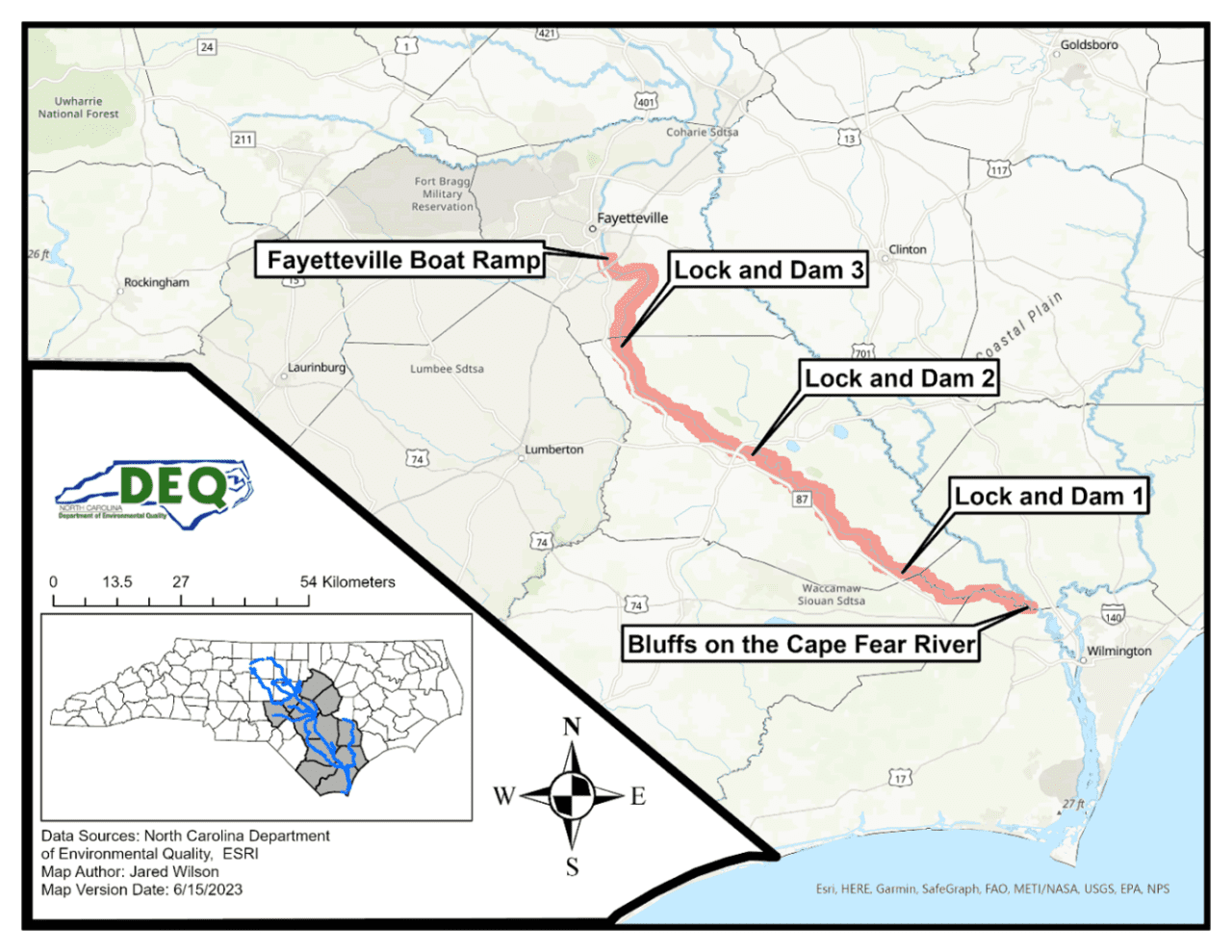
The state’s leading health agency is recommending people limit how much fish they consume from the middle and lower Cape Fear River after several freshwater species were found to contain a widely used chemical that may affect everything from liver function to immune response in humans.
The North Carolina Department of Health and Human Services on Thursday released an advisory after samples taken freshwater fish collected for testing concluded revealed they contained perfluorooctane sulfonic acid, or PFOS.
Supporter Spotlight
The advisory comes on the heels of newly released information from the U.S. Environmental Protection Agency.
Tests results showed PFOS concentrations were higher in bluegill, flathead catfish, largemouth bass, striped bass and redear.
PFOS was also found in American shad, blue catfish and channel catfish, but at lower concentrations, according to a news release.
“The PFOS concentrations were similar to those measured in fish from other states, based on recent data from the USEPA,” according to the release.
PFOS is a group of related chemicals known as per- and polyfluoroalkyl substances, or PFAS, which are synthetic chemical compounds used in a host of consumer goods, including stain and water-resistant products.
Supporter Spotlight
The state Department of Environmental Quality, or DEQ, and N.C. Wildlife Resources Commission collected and tested fish species most frequently caught and eaten in the state. All of the species tested contained PFAS, according to the release.
“Communities in the middle and lower Cape Fear Region have been requesting information about PFAS in fish since GenX was found in the river,” State Epidemiologist Zack Moore stated in the release. “There are no easy answers, but we hope this information will help residents make the best decisions for themselves and their families.”
Six years have passed since the public was first informed GenX and other PFAS had been discharged into the river for decades by a chemical manufacturing company nearly 80 miles upstream of Wilmington.
Since then, Chemours Fayetteville Works has been required under a court order to drastically reduce the amount of PFAS it emits into the river, air, and ground, and provide alternative drinking water sources to hundreds of residents whose private water wells contain PFAS above government thresholds.
The company is not the sole source of PFAS entering the Cape Fear River and other rivers throughout the state.
“The troubling news about contaminated fish in the Cape Fear River is another warning that forever chemicals threaten our health and way of life in North Carolina,” Stephanie Schweickert, North Carolina Conservation Network senior campaign organizer, said in a statement. “Communities across the state will continue to be impacted by forever chemicals in new and dangerous ways until industry leaders and political leaders do the right thing and take steps to cut this pollution off at the source.”
PFAS has been found in drinking water sources throughout the country, as well as in food, indoor dust, various consumer products and in some workplaces, prompting widespread health concerns.
PFAS exposure may be higher in communities where fish are frequently caught and consumed, according to the release.
Researchers are just scratching the surface on whether and how PFAS affect human health. Some studies link PFAS to an array of health effects, including growth, learning and behavior in children; impaired thyroid function; increased levels of cholesterol; decreased immune response; and higher risk of some cancers, including testicular and kidney cancer.
“Studies have documented the many benefits of eating fish,” Elizabeth Cuervo Tilson, State Health Director and DHHS chief medical officer stated. “We want residents to have these recommendations so they can make informed decisions about fish consumption, particularly if they regularly catch and eat fish from this part of the Cape Fear River.”
Women of childbearing age — 15-44 years — or are pregnant, nursing mothers and children are advised to eat no more than one meal per day of any combination of American shad, blue catfish, and channel catfish.
Women with that same group and children are advised against eating bluegill, flathead catfish, largemouth bass, striped bass and redear.
The rest of the public is advised to eat no more than seven meals a year of any combination of American shad, blue catfish and channel catfish.
That group is being advised to eat no more than one meal a year of bluegill, flathead catfish, largemouth bass, striped bass and redear.
Learn more
- Visit NCDHHS fish consumption advisories webpage for additional information about the sampling plan. Information will be updated as more data becomes available.
- The NCDHHS Clinician Memo may be used by anyone who wishes to discuss any concerns with their health care provider.
- More information about state efforts to address PFAS may be found at NCDHHS PFAS webpage and the NCDEQ PFAS webpage.
- For ways to reduce risk to PFAS exposure visit https://www.atsdr.cdc.gov/pfas/resources/pfas-faqs.html.







